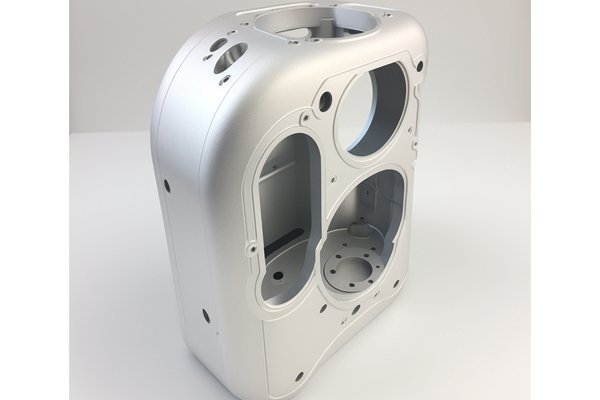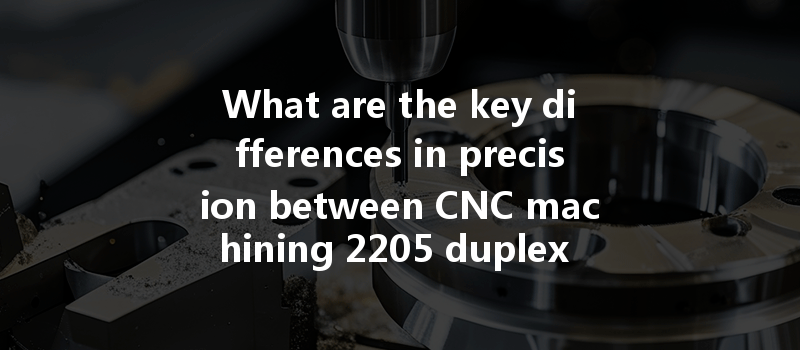: The Precision of CNC Machining
Did you know that precision machining is a cornerstone of modern manufacturing, contributing to an estimated 30% of the global manufacturing output? Among the various materials used in CNC (Computer Numerical Control) machining, stainless steel stands out due to its durability, corrosion resistance, and versatility. In this blog, we delve deep into the intricacies of CNC machining precision, specifically contrasting 2205 duplex stainless steel with 310S stainless steel—two exceptional materials that offer unique benefits and challenges.
The question we aim to explore is: What are the key differences in CNC machining precision between 2205 duplex stainless steel and 310S stainless steel? Understanding this disparity is not only crucial for manufacturers and engineers but also for businesses seeking to optimize their production processes, manage costs effectively, and ensure product quality.
Understanding CNC Machining

CNC machining is a technology-driven process used for creating parts and components with high accuracy. It involves the use of automated machine tools controlled by computer systems, enabling manufacturers to produce complex geometries repeatedly and consistently. This technology is applicable across various sectors, including aerospace, automotive, medical devices, and consumer goods.
The Role of Materials in CNC Machining Precision
The choice of material directly impacts the precision and quality of the finished product. Factors like hardness, tensile strength, ductility, and machinability play critical roles. This leads us to focus on our two materials: 2205 duplex stainless steel and 310S stainless steel.
Characteristics of 2205 Duplex Stainless Steel

Overview of 2205
2205 duplex stainless steel is a nitrogen-enhanced, chromium-nickel-molybdenum alloy. It boasts a unique microstructure, offering a combination of austenitic and ferritic phases. This balance provides superior resistance to corrosion, especially in chloride environments, making it a popular choice for industries such as oil and gas, chemical processing, and marine applications.
Benefits of 2205 in CNC Machining
Challenges in Machining 2205
Characteristics of 310S Stainless Steel
Overview of 310S
310S stainless steel is an austenitic alloy known for its high-temperature strength and oxidation resistance. Comprising a higher percentage of nickel and chromium than standard stainless steels, it performs excellently under elevated temperatures, making it a favored choice for furnace components, heat exchangers, and other high-temperature applications.
Benefits of 310S in CNC Machining
Challenges in Machining 310S

Comparative Analysis of CNC Machining Precision for 2205 and 310S
Having explored the characteristics of both materials individually, let’s draw a comparison based on their CNC machining precision.
Machining Precision
Machining Challenges and Solutions
Case Studies: CNC Machining Applications of 2205 and 310S
To illustrate the applications and impacts of machining precision in real-world scenarios, we can examine two case studies involving 2205 duplex stainless steel and 310S stainless steel.
Case Study 1: Offshore Oil and Gas (2205)
An oil and gas company faced durability issues with components made from standard stainless steels that were rapidly corroding under seawater exposure. They switched to 2205 duplex stainless steel, known for its superior corrosion resistance. Despite difficulties during the initial transition, including increased tool wear, they adopted advanced CNC machining strategies and improved coolant usage. The new parts exhibited significantly extended lifecycles and reduced maintenance costs, demonstrating the strengths of 2205 when machined effectively.
Case Study 2: Heat Exchangers (310S)
A manufacturer of heat exchangers encountered challenges in producing components that needed to perform at high temperatures. After evaluating different materials, they opted for 310S due to its high-temperature stability. By investing in advanced CNC equipment and training staff to optimize cutting speeds and tool choices, they achieved excellent precision. Their products not only met the stringent high-temperature requirements but also maintained reliability under oxidative conditions, leading to increased customer satisfaction and fewer warranty claims.
: Choosing the Right Material for Precision Machining
In summation, the choice between 2205 duplex stainless steel and 310S stainless steel for CNC machining largely hinges on the specific application and performance requirements. While 2205 stands out for its strength and corrosion resistance, 310S excels in high-temperature environments and easier machinability.
The key to optimizing CNC machining precision lies in understanding the unique properties of these materials and adapting machining practices to their characteristics. This includes selecting appropriate tools, establishing optimal cutting parameters, and utilizing technological advancements in machining processes.
As industries continue to embrace CNC machining for its efficiency and precision, understanding the differences in material performance ensures that engineers and manufacturers can make informed choices to create high-quality, durable parts.
This discussion on the precision of CNC machining with respect to different stainless steels not only enhances knowledge for manufacturers but is vital for making strategic decisions in product development and production processes. Whether you opt for the strength of 2205 or the reliability of 310S, careful consideration of the specific requirements of your operations will lead to success in the ever-evolving landscape of CNC machining.
Every detail counts—investing in understanding material behavior ultimately leads to better products, lower costs, and long-term success in the industry.




